After finding only a few huckleberries and not wanting to come home empty-handed, I spied some elderberries along the road. Luckily I had just looked through my berry book earlier in the week and read about elderberries.
Why not try elderberries I thought? The berry book was correct in saying the raw berries don’t taste good and should only be eaten cooked.
The four- to 20-foot high elderberry plants were scattered along the roadside so I stopped at each plant to collect berry clusters. As the berry book author recommended, I picked the entire cluster and then picked off the individual berries at home. The stem is pithy so breaking off the berry clusters was easy.
There are several varieties of elderberries that grow in North America (they are widespread). Only the blue and black elderberries are edible. The red elderberry plant is toxic (stems, root and foliage) and berries can cause nausea when consumed. Elderberry plants can be identified by the pinnately divided leaves arranged opposite along the stem.
Blue and black elderberries grow in the Rocky Mountain region. The black elderberry is glossy black while the blue elderberry has a powdery blue blush. Both range in size from BB’s to split peas.
With a good berry crop almost every year, the elderberry has been depended upon by humans and animals throughout history.
Native Americans ate the berries fresh or dried. They also buried the berry clusters under pine needles and then dug them up during the winter. Beyond eating the fruit, Native Americans used the berries to waterproof cedar-root baskets by rubbing berries inside of them.
Native Americans used the twigs and fruit for dyes and the branches for arrow shafts, flutes and whistles. The pithy stems were hollowed out for flutes and whistles with the pith being used as tinder. Since the plant grows in clumps, 10 to 30 stems are found in each plant. The stems were also used as twirling sticks to start fires.
The use for fire is how the elderberry received its name. ‘Elder’ comes from the Anglo-saxon world ‘ellen’ meaning fire-kindler or the word ‘aeld’ meaning to kindle, since the hollow stems were used to blow glowing tinder into a flame.
Elderberry wood is hard and has been used for combs, spindles and pegs.
In the Middle Ages, the elderberry was considered a Holy Tree, capable of restoring good health, keeping good health and as an aid to longevity according to the USDA. The high content of vitamin C in elderberries makes the berry sought after today for consumption and medicines. Both the fruits and flowers can be prepared for use against various ailments.
Of course the ripe berries are sought after by many animals as a food source. Bears feast on elderberries as do a variety of birds such as the western bluebird, common house finch, Stellar Jay, red-breasted nuthatch, white-crowned sparrow, western tanager, cedar waxwing, grouse and pheasants.
Deer, elk and moose browse on the stems and foliage as some trimmed trees reveal.
Birds and other animals that eat the berries disperse the seeds, helping in spreading the plant. Most elderberries are found along stream banks, river banks and riparian areas because they prefer moist, well-drained soils.
The hard seed coat and embryo dormancy contribute to the two- to five-year seed germination period. In storage, elderberry seeds can remain viable for up to 16 years.
The scattered nature of elderberries makes collecting enough for a recipe an adventure but worth the time. Now I’m off to eat the fruits of my labor–fresh elderberry jam on toast.

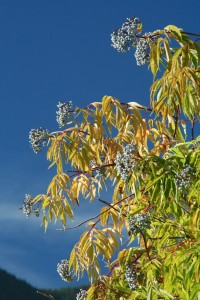
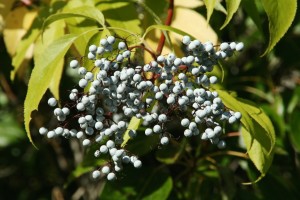
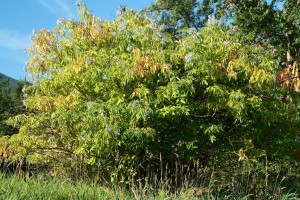
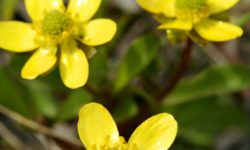

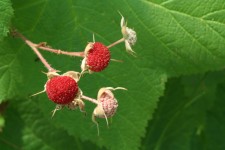
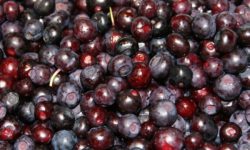
You should never harvest from the side of the road! Where I live in north Idaho, they spray herbicides on the road right of way often during the growing season. The residual remains and isn’t something I would want to ingest! To truly enjoy the benefits of elderberry, harvest at least 50 feet from a road right of way, as when they spray, it is often windy and the herbicides blow a distance.
Thanks for the tip! I harvested these elderberries on a mountain Forest Service road where I felt confident it wasn’t sprayed.
Laura
I think she means the forest service sprays for invasive weeds on these roads
I’ve seen them on main roads
You might be alright if your on side roads not often used
Diane I am also in n Idaho and have many elderberry trees on my property, berries are everywhere but my husband says to wait until the first frost before I pick, does that sound right